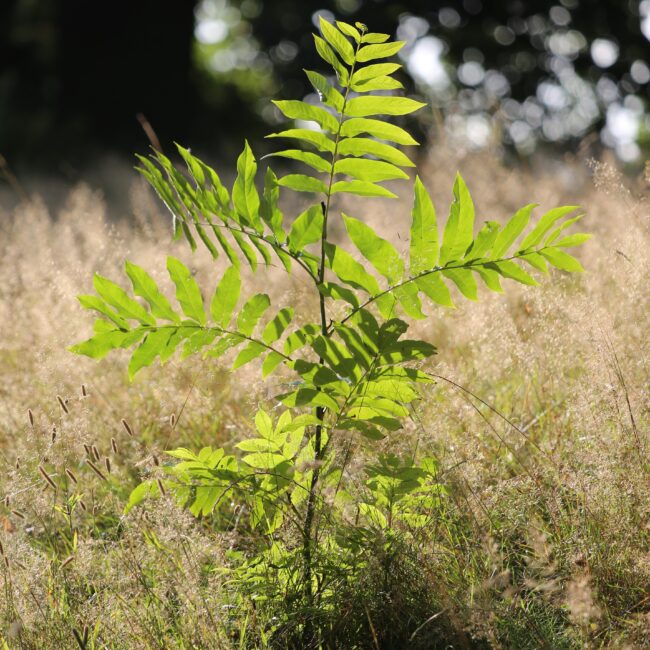Stephen Middleton from the Friends of Alexandra Park introduces us to his Tree of the Month for April…
Fast growing and invasive with suckers appearing both close to the tree and tens of metres away, watch out for our Tree of the Month for April, the Caucasian Wingnut (Pterocarya fraxinifolia). Walk along the road down from the Boating Lake past Go-Ape and across a path crossroads and you will see it on the right.
Although the tree is about 15 metres up to the right, there are sprouting bits of the tree close to the path coming from the underground roots. Move closer to the tree and you will see that it is surrounded by many more sprouting roots (suckers). If you are thinking of planting one of these trees, be very careful where you plant them. They are probably about the worst (best!) at suckering.

There are several more examples of our tree of the month in the park also showing its rampant suckering habit. One is in The Grove next to the 3-4-5 Pre-school and another is at the point where the entrance path from South View Road meets the Lower Road. Both of these have even more prolific suckers.
The Caucasian Wingnut is also known for its long dangling fruits in the summer. This time of year it is the catkins that are very visible. A single female catkin forms at the end of a branch with small red flowers which itself will develop into the long dangling structures with winged fruits. Many more thicker male catkins can be seen behind each female one. The leaves are large and pinnate (split into leaflets) and can be over 50 cm in length.

Let’s look at the name of the tree. Unsurprisingly it comes from the Caucasus as in its common name. The other part of the common name, wingnut, describes the winged seeds. In the scientific name pterocarya also means wingnut. (Ptero=wing) “remember” the pterodactyls flying above the dinosaurs. Carya=nut. The second part, fraxinifolia, means ash-leaved – similar looking leaves to an ash. (Fraxinus=Ash) folia=leaves (think foliage).
Caucasian Wingnuts have been in this country since the beginning of the 1800s after previously being introduced into France. In its native range this tree can ascend to 35 metres and grow to a girth (diameter) of up to 3 metres.
Also in the Park at this time of year keep an eye out for oak apples, they are galls that grow on our native oaks. Some trees can have substantial numbers of these crab apple-sized structures.





